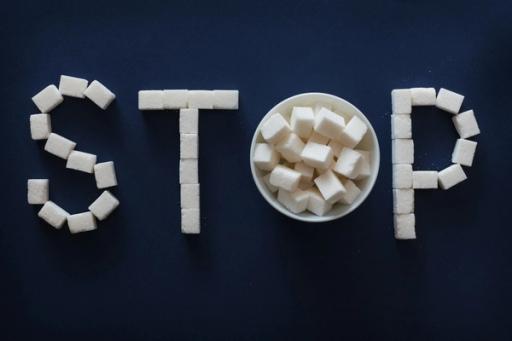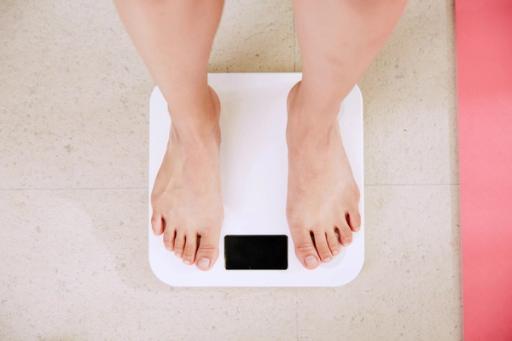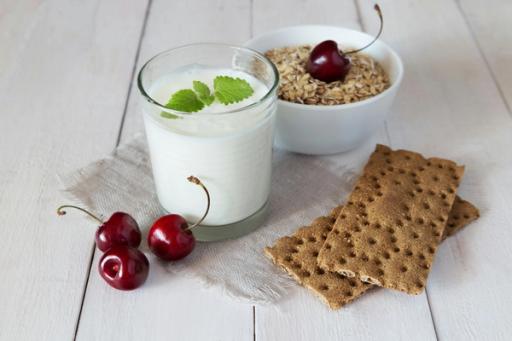
Many of us have been there—standing in front of the fridge, trying to figure out what to eat. The problem is that the numbers are staring back at you. No, not the expiration date. The calories. You can almost hear the food laughing at you as you open the container. Calories matter whether you're trying to lose weight, maintain your current size, or figure out a meal plan for a sports team. The more you understand them, the easier it will be to achieve your goals. This article will explain how calories are measured and offer practical methods you can use at home to track your calorie intake accurately.
Cal AI's calorie tracker can help you achieve your goals. It will allow you to understand how calories are measured while making it easy to monitor your food intake.

A calorie is a unit of measurement for energy. Scientifically, a calorie is defined as the energy required to raise the temperature of one milliliter of water by one degree Celsius. More specifically, it is the energy needed to raise the temperature from 14.5 to 15.5 degrees Celsius.
French chemist Antoine Lavoisier coined the word calorie in the 18th century to describe the body's internal heat.
A food calorie is a “kilocalorie.” In other words, it is the energy needed to raise the temperature of one liter of water by one degree. Initially, the calorie content of food was measured in a calorimeter. A known amount of food, which had its water content evaporated, was placed in a container surrounded by a known amount of water.
The container was sealed, oxygen piped in, and the food ignited. From the rise in temperature of the water, the calorie content of the food was calculated.
There are problems with this sort of calorie determination. Food can contain components such as fiber that will burn in a calorimeter but are not absorbed into the bloodstream and, therefore, do not contribute calories.
Today, producers use the “Atwater indirect system” to calculate calories by adding the calories provided by the energy-containing nutrients: protein, carbohydrate, fat, and alcohol. Because carbohydrates contain some fiber not digested and utilized by the body, the fiber component is usually subtracted from the total carbohydrate before calculating the calories.
The Atwater system uses the average values of 4 Kcal/g for protein, 4 Kcal/g for carbohydrates, 9 Kcal/g for fat, and 7 Kcal/g for alcohol, determined by burning these substances in a calorimeter. (There is some rounding off because simple sugars provide somewhat less and polysaccharides slightly more than 4 Kcal/g).
Thus, the label on a 45-gram KitKat that contains 3 g of protein, 29 g of carbohydrate (22 grams of which are simple sugars), and 12 g of fat would read 230 Calories.
Even though food scientists have since modernized Atwater's calculation, some experts say that the Atwater system is outdated and inaccurate. A 2012 study published in the American Journal of Clinical Nutrition found that the energy content of certain foods, such as nuts, cannot be accurately calculated by the Atwater system.
Plus, the FDA allows for a 20 percent margin of error for nutrients listed on a food label, including calories, meaning these calorie counts aren't incredibly accurate. But even if the calorie label had no margin of error, "[this method] does not take into account the digestive process, but assumes complete conversion of nutrients to energy," says Ruth MacDonald, professor, and chair of food science and human nutrition at Iowa State University. "That doesn't happen in humans, although our bodies are efficient at recovering energy from food." For now, the calorie count on your granola bar or cup of instant ramen was more than likely calculated through the classic Atwater system, but that method might be obsolete.

Calorie counting can help people lose weight, maintain their current weight, or even gain weight. It’s a valuable tool for achieving specific health and fitness goals. When people understand how calories impact their bodies, they can balance energy consumption with energy expenditure to reach their targets.
For example, if your goal is to lose weight, you can use calorie counting to identify how many calories you can eat daily to create a deficit that will help you shed pounds. The NHS states that the calorie data on food packaging allows people to calculate their intake. This can be helpful information to stop people from consuming too much.
Some foods, such as protein and fat, make you feel full more quickly than food, such as carbohydrates. According to the NHS, this can lead to someone consuming fewer calories when on a protein-rich diet than a carbohydrate-rich diet, despite feeling equally as whole. By quantifying the energy inside food, consumers can become better aware of the energy they are supplying their bodies.
Devices that monitor exercise, such as a treadmill or fitness tracker, usually display ‘live’ data of how many calories an individual burns per exercise session. These devices don’t display the total number of calories burned by the body at that time, but they estimate the number burned solely due to physical exertion.
To estimate the calories burned, these devices incorporate personal facts into their algorithms, according to an article published in the Journal of Parallel and Distributed Computing in 2018. This includes age, gender, height, and weight.
This information lets smart devices estimate a person’s BMR (Basal Metabolic Rate). According to the Encyclopedia of Animal Cognition and Behavior, this is the energy the body expends while at rest and carrying out daily biological functions.

A reliable digital kitchen scale is your first defense in calorie measurement. Here’s how to use it effectively:
This simple technique is called Quantified Nutrition and has helped lots of people get fit and stay healthy.
Packaged foods are typically labeled with detailed nutritional information, including calories per serving. We also have a beginner’s complete guide on how you can read nutrition labels on food. Pay attention to:
Modern technology has made calorie measurement more accessible than ever. Numerous websites and mobile apps offer comprehensive databases of foods and their calorie content.
Cal AI transforms calorie tracking with our cutting-edge AI technology; just snap a photo of your meal, and we'll do the rest. Our app combines your phone's depth sensor with advanced AI models to:
With 90% accuracy on visible foods and multiple tracking options like barcode scanning, food label recognition, and manual description for complex items like smoothies, we've made nutrition tracking effortless.
When preparing meals at home, cookbooks and online recipes can be excellent resources for calorie measurement. Many recipes provide detailed nutritional information per serving. Be sure to:
Many experts recommend weighing food raw or uncooked. Cooking generally affects the volume of food – some methods reduce the water content, meaning the cooked food weighs less than the raw food item. Other methods like steaming and pressure cooking might have the opposite effect. To be on the safe side, weigh foods raw. Then, check the macros and calories of the food item in the app. Nevertheless, if you wish, you may also weigh cooked food. This is particularly helpful if you’re not the one cooking or traveling and don’t have control over the cooking process. But keep in mind that the calorie content of some foods can change during cooking. To account for this:
Calorie counting books provide a handy reference for various foods and their calorie counts. These books often categorize foods by type, making finding the information you need easy.
When creating your recipes at home, calculating calories is straightforward:
Keeping a food diary can boost your awareness of calorie intake. Record everything you eat and drink, including portion sizes. Be honest and consistent in your entries, as this diary can help identify patterns and areas for improvement.
If you find calorie measurement challenging or need personalized assistance, consider consulting a registered dietitian or a coach. They can provide expert advice, create meal plans, and help you achieve your nutritional goals.
Cal AI transforms calorie tracking with our cutting-edge AI technology - just snap a photo of your meal, and we'll do the rest. Our app combines your phone's depth sensor with advanced AI models to analyze food volume, identify ingredients, and instantly calculate calories, protein, carbs, and fat content.
With 90% accuracy on visible foods and multiple tracking options like barcode scanning, food label recognition, and manual description for complex items like smoothies, we've made nutrition tracking effortless. Gone are the days of tedious manual logging calorie tracking apps.
Whether scanning a full meal or a quick snack, Cal AI gives you accurate nutritional information in under 15 seconds. Plus, our AI learns from your feedback, continuously improving its accuracy. Stay on track with personalized insights and smart reminders, Cal AI simplifies achieving your fitness goals.
Track your calories with your camera with Cal AI's AI calorie tracker today!